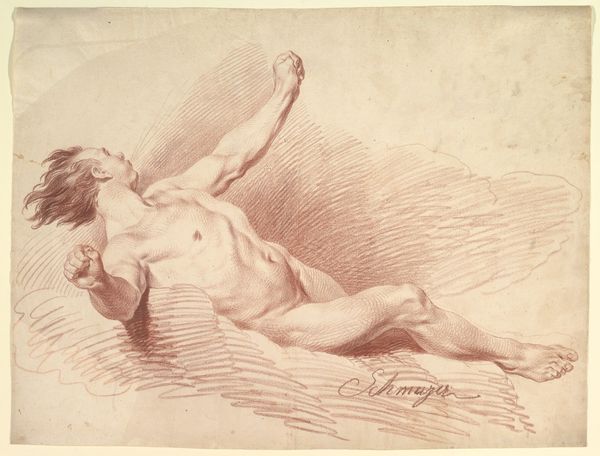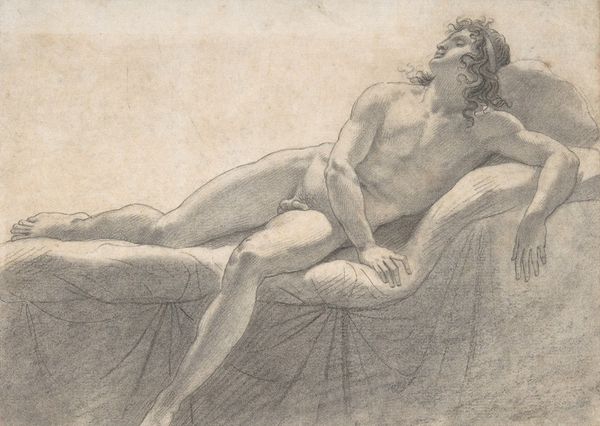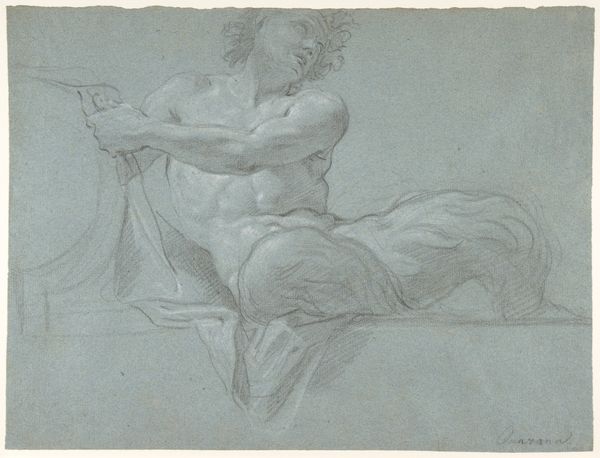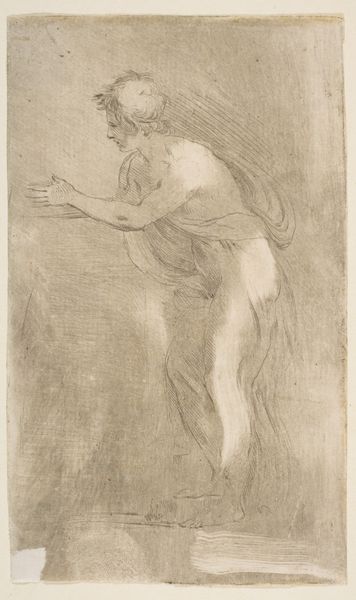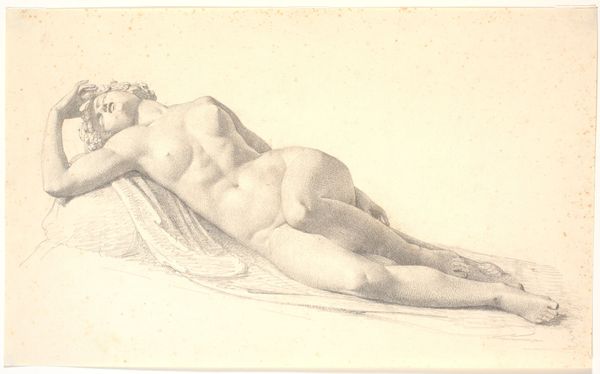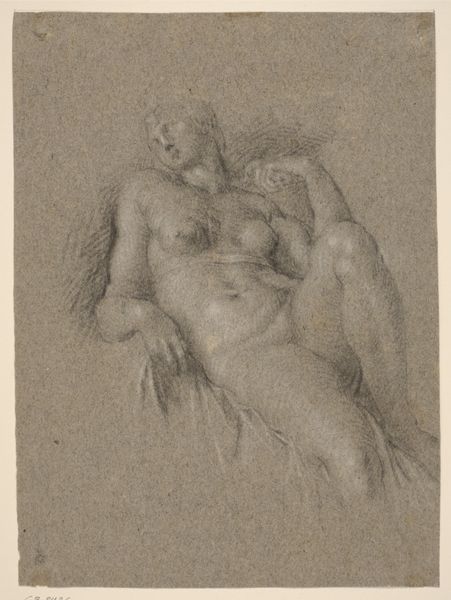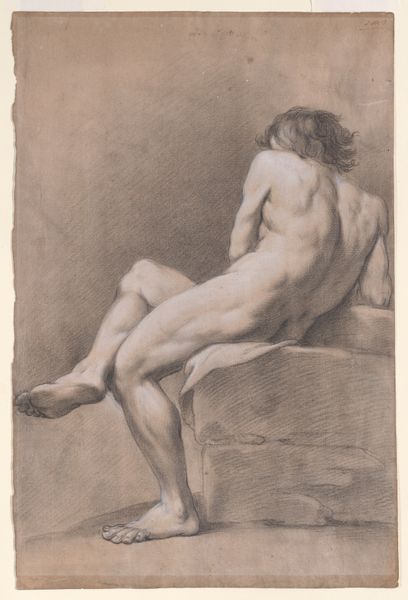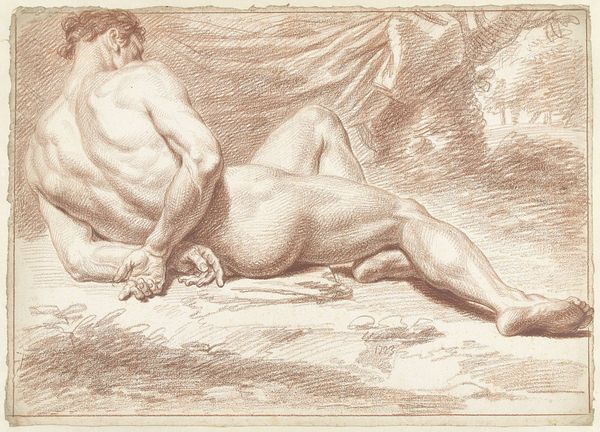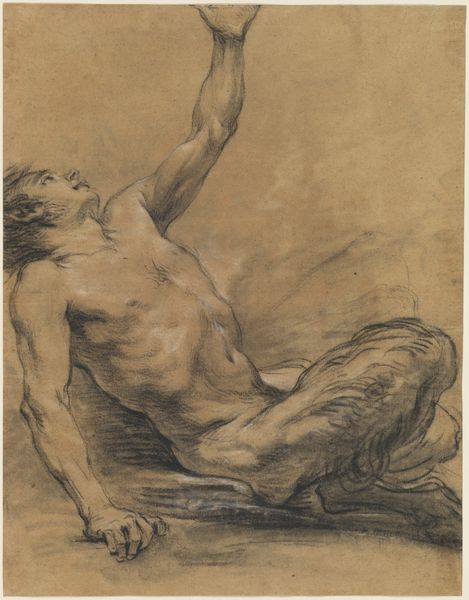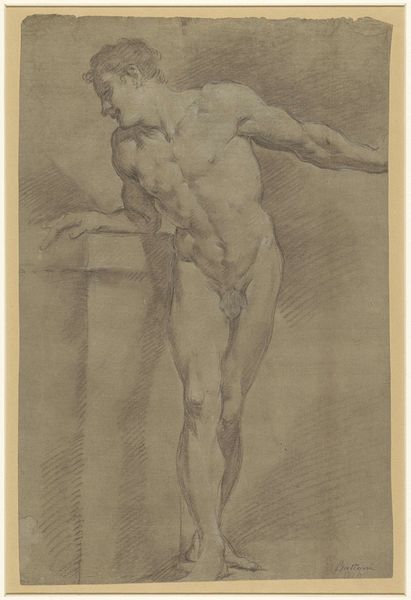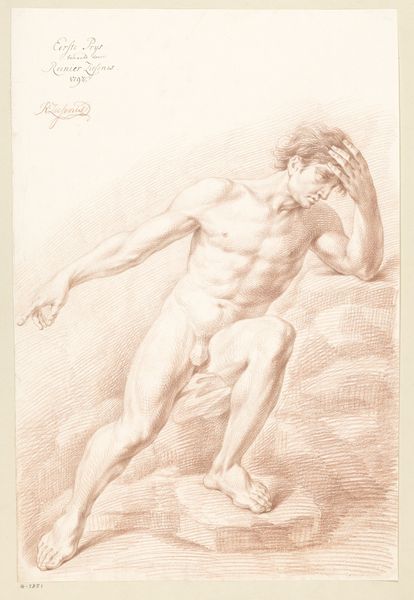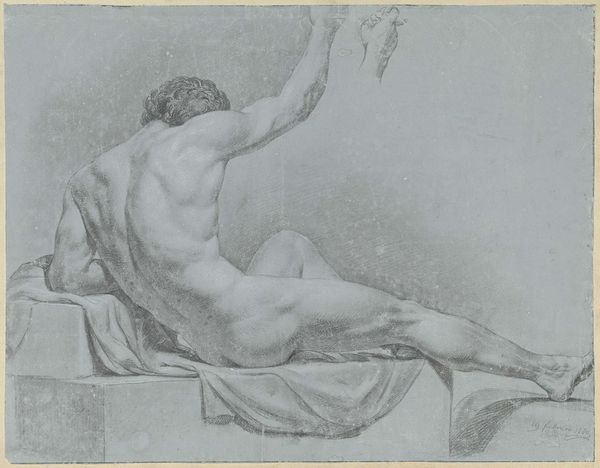
drawing, charcoal
#
portrait
#
drawing
#
baroque
#
charcoal drawing
#
figuration
#
pencil drawing
#
portrait drawing
#
charcoal
#
history-painting
#
academic-art
#
nude
Dimensions: plate: 39.7 x 30.4 cm (15 5/8 x 11 15/16 in.) sheet: 39.5 x 30.6 cm (15 9/16 x 12 1/16 in.)
Copyright: National Gallery of Art: CC0 1.0
Curator: This stark drawing, created around 1690 by Martial Desbois, is titled "The Dead Body of Christ". Executed in charcoal, it offers a raw and intimate view of a profoundly symbolic moment. Editor: My first reaction is the figure’s vulnerability. The limpness of the body, the downward slump – it communicates a very direct sense of loss and, dare I say, a certain critique of power. Curator: It's fascinating you perceive a critique of power, because this imagery has historically been used to legitimize power. However, looking at it as an iconographer, I see how the downcast head, often associated with mourning or humility, also serves to signify Christ's submission to the divine plan. Editor: That's where our perspectives diverge. To me, it's not just submission, but the cost of that submission – the sheer physical toll demanded. This isn't some glorious ascension; it’s a man’s broken body. The Baroque era, despite its religious zeal, was obsessed with the corporeal, the flesh, as sites of both agony and ecstasy. Curator: Precisely. The Baroque aimed to elicit a visceral response from the viewer. Look at the crown of thorns placed almost casually at his feet. It’s not glorified, but rather a stark reminder. It's an emblem, distilled into its most potent form. Editor: And this is what makes it powerful still. It confronts viewers, even centuries later, with uncomfortable questions about faith, sacrifice, and the societal structures that perpetuate these narratives. Is this ultimate sacrifice always freely given, or are there invisible chains forcing some into positions of submission? Curator: The genius lies in its ambiguity. We read so much into the image based on our experiences, informed by time, our current struggles and challenges. The image becomes a mirror. Editor: I see what you mean, there is still room for interpretation. Desbois leaves us grappling with both the historical implications and the timeless echoes of this potent scene. Curator: Indeed, leaving the image's meanings to endure.
Comments
No comments
Be the first to comment and join the conversation on the ultimate creative platform.
